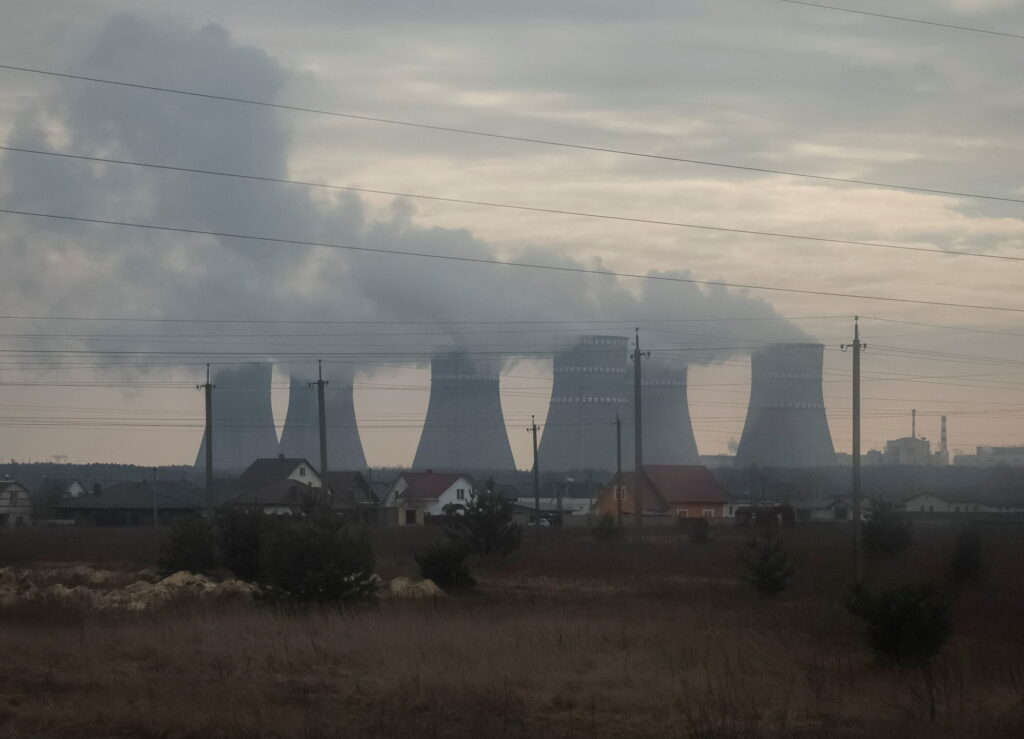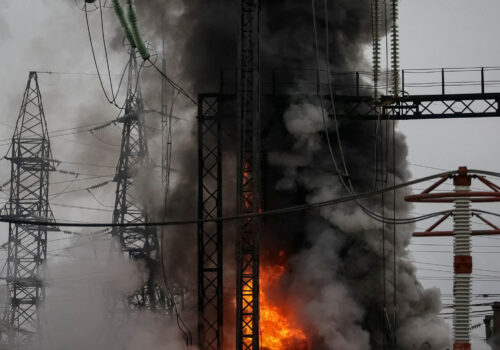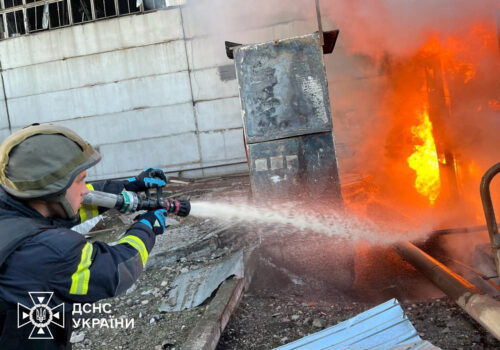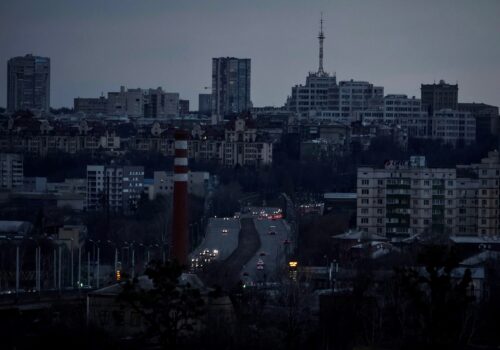Even while recent Russian attacks on energy infrastructure have once again thrust Ukraine’s besieged energy sector into the headlines, the country’s energy potential remains undiminished. Ukraine’s competitive advantage in clean power including wind, solar, and especially nuclear, is extraordinary. This capacity can play a leading role in funding the country’s reconstruction and could also help carve out a future place for Ukraine in Europe.
The cost of rebuilding Ukraine is currently estimated by the World Bank at $486 billion. Some of this, hopefully, will be paid for by Western governments and with seized Russian assets, but private investment and Ukrainian ingenuity will have to foot a large portion of the bill. However, with no end in sight to hostilities, global investors are more likely to put their money into longer term projects, of which large energy infrastructure is a prime example. Nuclear power is among the most promising options.
Ukraine has been a nuclear energy country since 1977. With the very high-profile exception of the 1986 Chornobyl nuclear disaster, which was much more a failure of Soviet bureaucracy and politics than of Ukrainian nuclear energy management, the country actually boasts a strong record of nuclear power success. Before Russia’s full-scale invasion forced the shutdown of the Zaporizhzhia Nuclear Power Plant in 2022, Ukraine had 15 reactors running, constituting approximately 54% of its baseload power generation.
Ukraine has a well developed nuclear energy industry including a national regulator and a large nuclear workforce. It also has a bilateral civilian nuclear power agreement with the US, known as a 123 Agreement, which means it is authorized to receive most US civilian nuclear technology. With US and European nuclear ambitions bogged down by over-regulation, spiraling construction and commodity costs, a limited nuclear labor force, underdeveloped supply chains, and a near irrational fear of nuclear accidents, Ukraine’s nuclear sector has a number of clear advantages.
Stay updated
As the world watches the Russian invasion of Ukraine unfold, UkraineAlert delivers the best Atlantic Council expert insight and analysis on Ukraine twice a week directly to your inbox.
Ukraine’s nuclear agility is unparalleled. Now that it is a fully integrated member of ENTSO-E, the potential for the country to export nuclear-generated clean power to Europe is huge. While building new nuclear power plants in Ukraine is hardly a quick option, once full commercial power exports are authorized, Ukraine could make many billions per year on electricity sales to the rest of Europe.
With its preexisting nuclear industry, Ukraine could also potentially expand its nuclear capacity much faster than any newcomer to nuclear power generation. In the West, nuclear power plants can take 8-15 years to build, depending on regulatory approval times. They can cost approximately $2-3 billion for a single small modular reactor and as much as $15 billion for a large plant. In the past, Ukraine has been able to build nuclear power plants with significantly lower costs and in shorter time frames.
By purchasing Ukrainian power, Europe could save billions and reinforce its energy security. The EU’s energy transition plan is mostly focused on renewables, but a baseload is required to make renewable power sources usable as peak load. With war in the Middle East shutting down the Red Sea and Suez Canal shipping routes, new EU sanctions under consideration targeting Russian liquified natural gas (LNG), Russia bombing Ukrainian gas storage facilities holding European gas supplies, and the end of the Gazprom-Naftogaz transit contract in December 2024, nuclear power is the only scalable baseload available that is secure and zero emission.
Ukraine can also offer much cheaper power than other European countries. Although current Ukrainian prices are regulated according to wartime restrictions, and while Russian devastation of Ukrainian power generation capacity in March and April 2024 has affected markets, Ukraine will remain extremely competitive with the rest of Europe even once controls are lifted.
Eurasia Center events

The path forward will not be straightforward. In addition to the obvious challenges presented by Russia’s ongoing invasion, the biggest obstacles Ukraine faces in expanding its nuclear power capacity are investor fears and the need for reform at the country’s state-owned nuclear power company, Energoatom.
The possibility of private nuclear power plants is a huge opportunity for Ukraine’s economy and thus reconstruction, because the private sector almost invariably moves faster and more efficiently than the public sector. Many countries have privately owned and operated nuclear power plants, including the US and UK. This model makes it possible to raise funds quickly. It also brings security and rule of law benefits, along with operational benefits and the anti-corruption protections of Western business standards. Moreover, private companies can get started now, potentially years before state-owned entities.
As to public nuclear development, meaning with and through Energoatom, success will depend on achieving de-monopolization and reform of the state-owned company. Despite its nuclear power prowess and ownership and operation of all four of Ukraine’s nuclear plants, Energoatom is hampered in its nuclear expansion plans by a legacy Soviet corporate culture based on monopoly status. Its monopoly position in Ukraine has eliminated any internal incentive to adopt Western corporate standards, including anti-corruption norms.
In recognition of this, Ukraine’s parliament enacted a law in February 2023 requiring the corporatization of Energoatom in order to “open up additional opportunities for attracting significant investments in the industry and development of domestic nuclear energy, which is the key generation in the country,” according to Ukraine’s Minister of Energy German Galushchenko. This corporatization process is currently underway.
Intended to bring the nuclear behemoth into line with international corporate governance and structure standards, the reform of Energoatom requires the selection of an independent international supervisory board and the implementation of numerous internal policies and standards. It is seen as so important that its completion is a requirement for Ukraine to receive up to $100 million in financial support from the US under the recently signed Ukraine-US Memorandum of Understanding regarding Collaboration on Ukrainian Energy System Resilience.
Once the reform of Energoatom advances and possibilities for private nuclear power open up, Ukraine could lead the rest of Europe in constructing new nuclear power plants. Energy is one of Ukraine’s great strengths, as are an educated labor force and technological skills. Taken together, these assets can help fuel Ukraine’s reconstruction and power Europe’s energy transition through new nuclear development.
Suriya Jayanti is a nonresident senior fellow at the Atlantic Council’s Eurasia Center.
Further reading
The views expressed in UkraineAlert are solely those of the authors and do not necessarily reflect the views of the Atlantic Council, its staff, or its supporters.

The Eurasia Center’s mission is to enhance transatlantic cooperation in promoting stability, democratic values and prosperity in Eurasia, from Eastern Europe and Turkey in the West to the Caucasus, Russia and Central Asia in the East.
Follow us on social media
and support our work
Image: Rivne Nuclear Power Plant. February 11, 2023. (REUTERS/Gleb Garanich)




